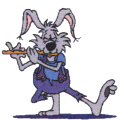
Music Theory & History ~ All about the Flute ~ Performing Advice
Music Psychology ~ Teaching ~ Fun Stuff ~ Mostlywind ~ Links

Click on the Main Categories above to start your adventure.
Below are the Sub-Sections for this category.
[Flute Teaching - Level One] [Flute Teaching - Level Two] [Flute Teaching - level Three]
Following an HMI visit, it was suggested that we be more succinct in our expectations within our department.
Feel free to use and amend the material.
(It would be helpful for me to have feedback if you do choose to use it!)
email: [email protected]
| SCHEME OF WORK: FLUTE LEVEL 3 (ADVANCED) |
KNOWLEDGE OF THE INSTRUMENT Pupils should be able to show a working knowledge of the following: * How to clean and maintain the flute * Tune the instrument precisely. * Know of basic repertoire * Know of the history and development of the flute. * Listen to and know of famous players, past and present. |
TECHNIQUE Pupils should be able to demonstrate the following: * Be able to demonstrate a good dynamic range * Secure breath control, and subsequently a good controlled vibrato * know all the trill fingerings * Ability to demonstrate advanced articulation i.e. double and triple, flutter tonguing. * Have a good warm-up technique based on long notes, designed to develop stamina, range and flexibility |
SCALES AND ARPEGGIOS Pupils should be able to play from music the following: * Major: All major scales - two octaves * Minor: All minor scales - two octaves * Arpeggios: As above * Chromatic: starting on any note - two octaves * Dominant 7th: in any key - two octaves * Diminished 7th: starting on any note - two octaves * Whole tone: starting on any note - two octaves * All scales should be played both tongued and slurred and should demonstrate fluency and an even sound production |
REPERTOIRE * Suitable repertoire should be drawn from recognised sources including tutor books, studies and pieces according to the pupil’s stage of development. * Suitable material maybe drawn from the various examination board syllabi. * Standard Repertoire, including concertos, should be introduced * Pupils should be encouraged to perform regularly and play in ensembles. * Performances should be expressive, showing individuality, demonstrating musical maturity through stylish and communicative playing and control of the instrument through fluency, accuracy, stamina and tone quality. |
THEORY Pupils should be able to demonstrate a knowledge of music theory relevant to the chosen repertoire. In addition, pupils must recognise and understand the following: * Notation: All treble clef notes (letter name and fingering), Bass Clef * Rhythm: All note values, The meanings of all time signatures, Double dotted notes * Key signatures: All major and minor keys, Be able to construct a major scale and know the significance of wholetones and semitones *Transposition: How to transpose a melody. *Terms: All commonly used abbreviations and Italian terms |
SIGHT READING Pupils should be prepared to play a short piece at sight: * in simple or compound time * in any key * any rhythm * including any common indication * To understand and be able to transpose a simple melody |
Aural Pupils should be able to: * Clap from memory the rhythm of a melody in simple or compound time * Beat time to a melody in simple or compound time * Sing or play back from memory a simple four note phrase * Recognise rhythmic or melodic changes to a four bar phrase played twice with the change being made in the second playing * Complete a simple four bar phrase by adding two further bars to the first two, creating a cadence in the home key. These aural skills should be developed as an extension of those attained at level 2. The importance of listening at all times should be emphasised. |
RECOMMENDED BIBLIOGRAPHY Study Book: Taffanel and Gaubert - Daily Exercises |
![]() E-Mail us your Links
E-Mail us your Links ![]()
Please return again soon.
Carole B. Miller
Copyright � 2002 [Mostlywind]. All rights reserved.
Revised: February 10, 2009